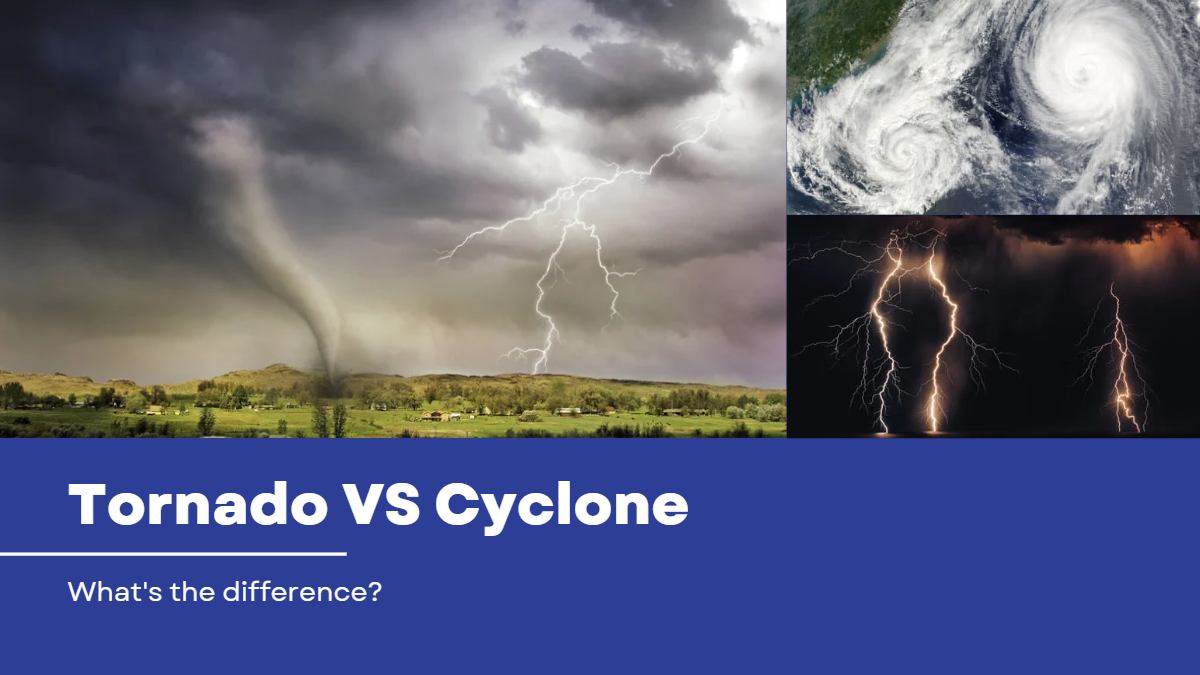Natural disasters are a reality and two of the most destructive and dangerous weather phenomena are tornadoes and cyclones. While both tornadoes and cyclones can cause significant damage and loss of life, they differ in many ways, including their formation, location, and size. This article will explore the differences between tornadoes and cyclones.
Differences between tornadoes and cyclones
A tornado is a violent, rapidly rotating column of air that extends from a storm cloud to the ground. They form over land, usually in areas where warm, moist air from the Gulf of Mexico meets colder, drier air from Canada. When these two air masses collide, they can create instability in the atmosphere, which can lead to the formation of a tornado.
This is what a tornado looks like:
A massive tornado warned the supercell as it passed through Linneus, MO moments ago. Listen to reports of damage caused by the tornado. On route now. #mowx pic.twitter.com/iIetgZnXs0
– Aaron Jayjack (@aaronjayjack)
May 7, 2023
Tornadoes typically have a diameter of a few hundred feet to a mile and can move at speeds of up to 70 miles per hour. They are characterized by their funnel shape, formed by the rotating air column. Tornadoes are typically short-lived, lasting only a few minutes to a few hours, and are generally more common in the United States than other parts of the world.
On the other hand, a cyclone is a type of meteorological phenomenon that occurs in tropical regions, such as the Indian Ocean and the South Pacific. Cyclones are essentially the same as hurricanes and typhoons, but they occur in different parts of the world. Cyclones are characterized by low pressure systems, strong winds and heavy rain. They can form over warm ocean waters and can be large, sometimes spanning hundreds of miles.
#Cyclone | A cyclonic circulation is likely to develop over the southeastern Bay of Bengal around May 6.
Under its influence, a low pressure area is likely to form over the same region during the next 48 hours.@Indiametdept pic.twitter.com/W4NxaydGXi
– DD News (@DDNewslive)
May 2, 2023
Unlike tornadoes, cyclones can last several days and travel long distances. They can also be more predictable than tornadoes, as they typically follow a predictable path and are easier to track using modern technology.
Tornadoes vs cyclones
Here are the notable differences between tornadoes and cyclones.
|
Characteristic |
Twister |
Cyclone |
|
Location |
Form on land |
It forms over warm ocean waters. |
|
Size |
Small, usually between a few hundred feet and a mile in diameter. |
Large, sometimes reaching hundreds of kilometers in diameter. |
|
Training |
It forms when warm, moist air meets colder, drier air. |
They form over warm ocean waters, usually in areas of low pressure. |
|
Wind speed |
Can reach up to 300 mph |
Can reach up to 200 mph |
|
Life expectancy |
Usually short-lived, lasting from a few minutes to a few hours. |
It can last several days |
|
Predictability |
Can be unpredictable and difficult to track |
Can be more predictable and easier to track |
|
Frequency |
Most common in the United States, but can occur in other parts of the world. |
They occur in tropical regions such as the Indian Ocean and the South Pacific. |
|
Associated hazards |
Strong winds, heavy rain, hail, lightning and flying debris |
High winds, heavy rain, storm surge and flooding |
In summary, tornadoes and cyclones are weather phenomena that can be destructive, but they differ in terms of their location, shape, size, and lifespan. While tornadoes form over land, are smaller and generally more unpredictable, cyclones form over warm ocean waters, are much larger and tend to be more predictable.
Categories: Optical Illusion
Source: ptivs2.edu.vn
